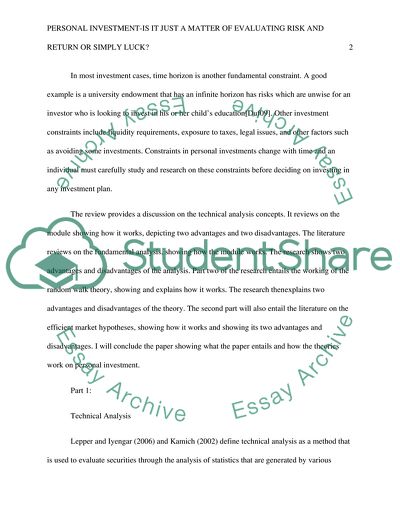Cite this document
(“Is Investment a Matter of Evaluating Risk or Simply Luck Essay”, n.d.)
Is Investment a Matter of Evaluating Risk or Simply Luck Essay. Retrieved from https://studentshare.org/finance-accounting/1635165-personal-investment-is-it-just-a-matter-of-evaluating-risk-and-return-or-simply-luck
Is Investment a Matter of Evaluating Risk or Simply Luck Essay. Retrieved from https://studentshare.org/finance-accounting/1635165-personal-investment-is-it-just-a-matter-of-evaluating-risk-and-return-or-simply-luck
(Is Investment a Matter of Evaluating Risk or Simply Luck Essay)
Is Investment a Matter of Evaluating Risk or Simply Luck Essay. https://studentshare.org/finance-accounting/1635165-personal-investment-is-it-just-a-matter-of-evaluating-risk-and-return-or-simply-luck.
Is Investment a Matter of Evaluating Risk or Simply Luck Essay. https://studentshare.org/finance-accounting/1635165-personal-investment-is-it-just-a-matter-of-evaluating-risk-and-return-or-simply-luck.
“Is Investment a Matter of Evaluating Risk or Simply Luck Essay”, n.d. https://studentshare.org/finance-accounting/1635165-personal-investment-is-it-just-a-matter-of-evaluating-risk-and-return-or-simply-luck.


